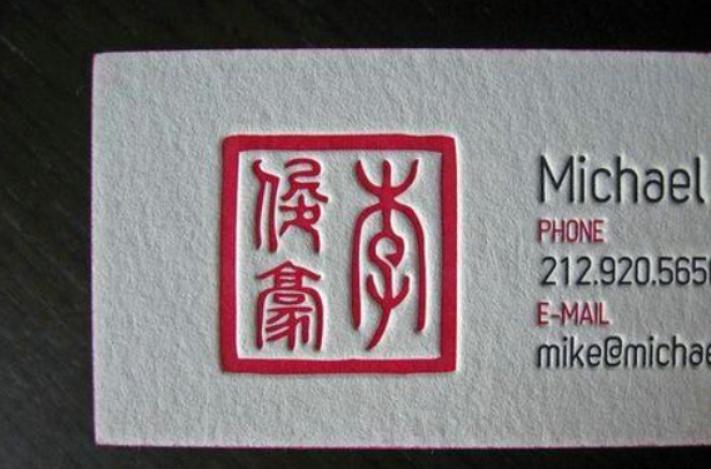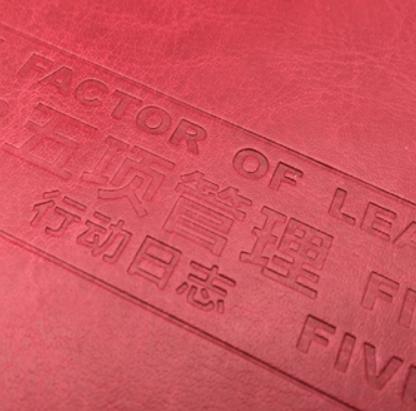Seven Printing Processes in Certificate Cover Making
Generally, the printing process of certificate cover production includes seven basic methods: relief printing, intaglio printing, lithographic printing, screen printing, thermal transfer printing, xerographic printing and inkjet printing.
Among them, the first three printing methods are more commonly used, and the prints produced by the first three methods occupy a large part of the printed matter produced every year. Below, a brief description is given for each printing process.
1. Relief printing
When the ink is applied to the raised surface and a piece of paper is used to cover the ink-coated surface, the ink is transferred to the paper. The method of printing using this principle is called relief printing.
Relief printing is the oldest printing method. There are many different printing plates that are used on different types of printing machines to print colorful and varied products, including newspapers, books and magazines.

2. Intaglio printing
Relief printing transfers ink from a raised surface to the paper, while the intaglio printing process is just the opposite. In the intaglio printing process, the ink is transferred from a concave surface to the paper, and the graphics and text on the gravure are lower than or sink into the surface of the printing plate.
In the printing process, first apply ink to the entire surface of the printing plate, and then wipe the plate surface to make it clean, so that the ink is left on the concave part of the printing plate, and then the paper is pressed on the printing plate, and the ink is transferred to the paper.
It is generally believed that Karl Kleitsch invented the intaglio printing process in 1879. In 1894, he designed a printing machine that used corroded copper cylinders instead of flat plates to print. In the following two decades, gravure cylinders have been used to print a variety of products. Today, platform and roller-type printing plates are used on a variety of different printing presses to print newspaper Sunday supplements, magazines, bulk mail orders, stamps, and even banknotes, etc. Many printed fabrics are also products of intaglio printing.

3. Screen printing
There is a printing method that prints by squeezing the ink through the holes of the stencil print. The common stencil printing method is screen printing, which is also called stencil printing.
The process of screen printing is: after the paper is placed under the screen, ink with paint-like viscosity is applied to the screen. Finally, beat and squeeze the ink through the holes of the stencil to reach the paper under the screen. This step is done by pulling the squeegee on the screen.
The method of using screen printing to decorate objects is very old. There are data showing that screen printing technology is widely used in China to decorate pottery and other objects. As early as the early 20th century, screen printing developed rapidly, and in many years later, a large number of different types of stencil materials were developed. Now almost any object surface of different forms or sizes can be printed by screen printing.
4. Lithographic printing
lithography is based on the principle of oil-water repellency, and its printing process is as follows:
First, the inked image portion is formed on the lithographic plate. The image can be drawn directly on a lithographic plate with an oil-based pencil, or it can be formed by photographic methods. Secondly, water the printing plate. Because oil and water repel each other and water is repelled by the image, the water covers the non-graphic part of the printing plate. Once again, cover the entire layout with a layer of ink. Because oil and water repel each other, the ink is repelled by the water, so the ink adheres to the oily image. Then, the paper is stamped on the surface of the plate, and the inked image is transferred to the paper.
Lithographic printing is also commonly referred to as offset printing. Unlike relief painting and intaglio printing, the printed image of offset printing is only flat on the surface of the printing plate. In the printing process, the paper rubs against the image, and the image is quickly worn out, especially when the printing plate is used on a high-speed printing press. In order to reduce the abrasion of the image on the printing plate, the image should first be transferred to the blanket.
According to relevant data, lithography was invented by German Alois Senefelder in 1798. He directly printed oily patterns painted on a piece of heavy limestone onto paper. Now a variety of different lithographic plates are used in high-speed offset presses and small offset presses for printing, and their output is more than any other printing method.
5. Xerographic printing
In the 1930s, when the world was only used for copying methods based on direct photocopying of silver salt photography, Carlson used a photoconducting medium to form an electrostatic latent image and electrostatically charged insulator. The two ideas that powder can develop the latent image were combined together, and he successfully studied the method of forming an electrostatic latent image on the photoconductive insulating film, which led him to invent the xerographic technology.
6. Thermal transfer printing
Thermal transfer printing is also called heat transfer printing. In fact, it is not a new printing process. It is only recently that this process has been developed rapidly. Modern thermal transfer printing must first use special inks, and in some cases, special papers. We put the dried printed graphics and text on the fabric and heat it, and the ink changes from solid to vapor (sublimation) when it reaches about 199°C, which allows the fuel to enter the fabric fibers and dye them.
7. Inkjet printing
Inkjet printing is a non-contact printing process, which does not require printing surfaces like movable type, printing plates made by photographic methods, or film. The manuscript to be printed is directly given by the computer. The microcomputer on the inkjet printer controls the ink flow on the print head. According to the instructions, the ink particles are ejected from the nozzles and form characters or images.
Ink particles are produced in the inkjet system. They can be sprayed on the moving paper roll, and can be deflected into the ink reservoir when not printing, and the deviated ink can be used again.
Our factory is a certificate production manufacturer integrating customization, sales, wholesale and procurement. The products are oriented to government agencies, enterprises, educational institutions, etc. Now we have a full set of mature production lines such as mold making workshops, hydraulic workshops, stamping workshops, die-casting workshops, polishing workshops, and corrosion workshops, electroplating workshops, baking paint workshops, and quality inspection workshops with large-scale manufacturing capabilities.
